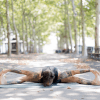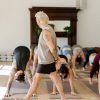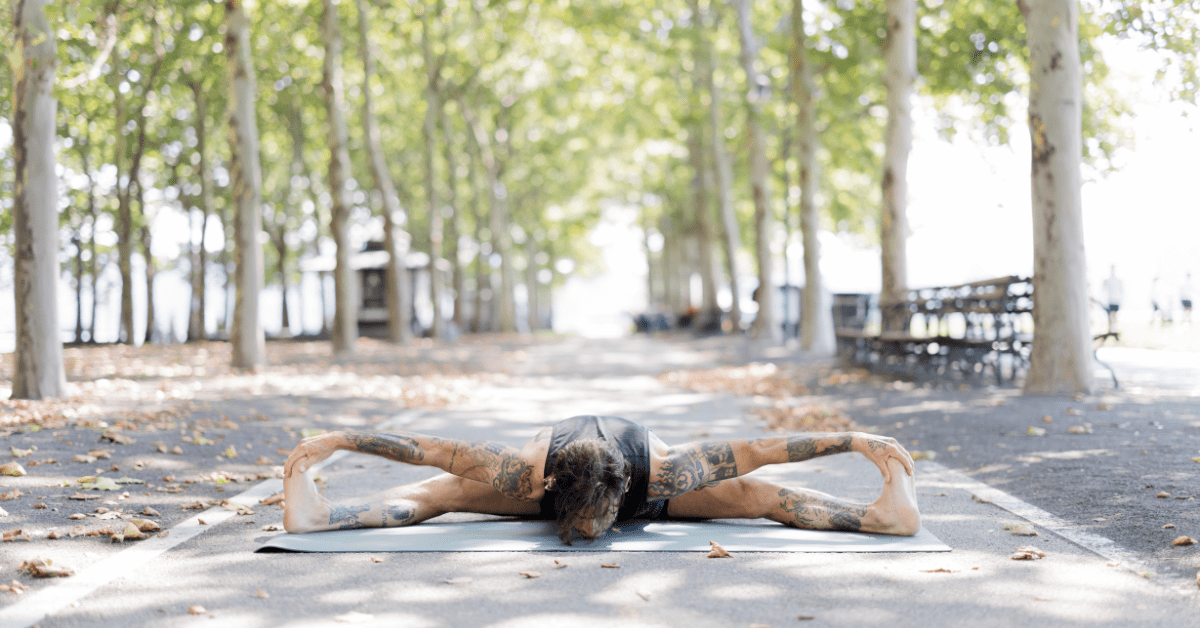
Vinyasa yoga was brought to the United States in the 1970s by Pattabhi Jois through ashtanga yoga and grew in popularity as a holistic way to approach movement. Through the development of studying yoga in the west, other branches of yoga were often explored, and new teachers in the different lineages emerged.
Yin yoga in the west is credited mostly to teachers Paulie Zink, Paul Grilley, and Sarah Powers and has reached more and more people over the years. Yoga studios across the U.S. started to adopt the yin yoga practice and offer classes in this style regularly on the schedule after noticing the significant benefits of the practice. Many studios even specialize in yin yoga teacher trainings, focusing on the subtle body.
The History of Yin Yoga
Unlike vinyasa yoga originating in India, yin yoga has roots in ancient Chinese philosophy, most notably, Taoism. Yin Yoga made its way to the U.S. roughly around the same time as vinyasa and ashtanga yoga (1970s), and began as a practice that only hardcore yogis and martial arts practitioners would engage in.
Part of the foundation of the practice of yin yoga was that it was a great way to stretch and strengthen muscles in between other physical activities and exercises. Paulie Zink specifically noted the great benefits he noticed after incorporating yin yoga into his practice between martial arts sessions, where his muscles had grown extremely tight and fatigued.
You Can’t Mention Yin Yoga without Mentioning Fascia
A term most popularly coined with the practice of yin yoga is the term fascia, or “connective tissue.” Yin yoga is a yoga practice where you hold poses anywhere from 3 to 7 minutes and the poses are designed to stretch your body in a way that gets into the connective fibers of the muscle tissue, known as fascia. This revolutionary finding made yin yoga a great complementary practice to more vigorous and strength training exercises.
While most yin poses mimic many of the poses found in a traditional hatha, vinyasa, or ashtanga yoga class, the duration to which they are held makes it arguably more challenging. The poses can appear restful on the surface, but the longevity in holding the posture helps stretch the muscle at a deeper level (the fascia level).
Fascia is the connective tissue surrounding muscles, organs, bones and other tissues, weaving together an entire network between them. It is best described as, “the white fuzzy membrane inside of an orange.” The fascia tissue in the body is stimulated and strengthened when poses are held for periods of time in yin yoga. This is part of what makes the practice a well rounded addition or substitute for other stretching mechanisms and workouts. Plus, a yin yoga class tends to be super dreamy! By the time you enter Savasana, your muscles will have put in all their work, preparing your body for deep rest and relaxation.
Common Yin Yoga Poses
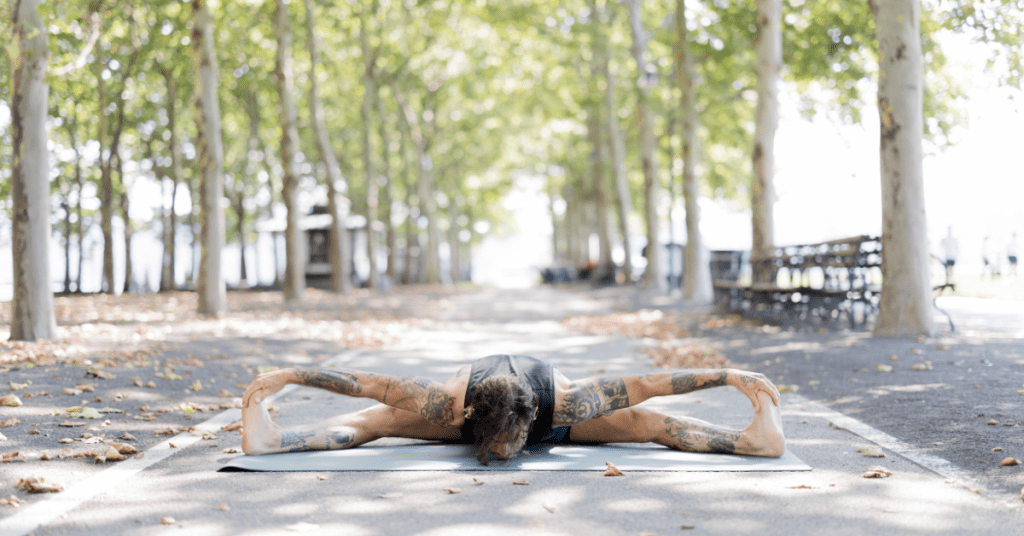
Ronen Kauffman in dragonfly pose outside on the Hoboken pier walkway
Dragonfly Pose
Dragonfly is a popular pose and exists in vinyasa yoga as seated wide legged forward fold. The posture requires sitting on the ground with your legs spread wide and is great for beginners, intermediate, and seasoned practitioners alike.
How to: Sit on the floor and open your legs out wide (in a V shape). You can modify dragonfly pose by rolling blankets underneath your knees, by bringing blocks out in front of you, or by having a bolster on top of 2 blocks (creating a Stonehenge shape).

A yogi in supine tree pose
Supine Tree
Supine tree is just Vrksasana (tree pose) reclined on your back. This is a great way to introduce people to the standing variation of the pose. It’s also a great posture to get people comfortable with reaching the heel of the foot of their bent leg to get as close to their seat as possible.
Supine tree pose stretches the arms and legs and allows the hips to open. Using supine tree pose in a yin yoga sequence helps instill concentration as well as relaxation and is probably a pose they can hold for a while being that it is reclined.
How to: Lie on your back with your legs straight out in front of you and your arms reaching up overhead. Bend one knee and tuck the heel of that foot nice and close to your seat. Let your knee rest gently on the ground beside you, or pad underneath it with a blanket.
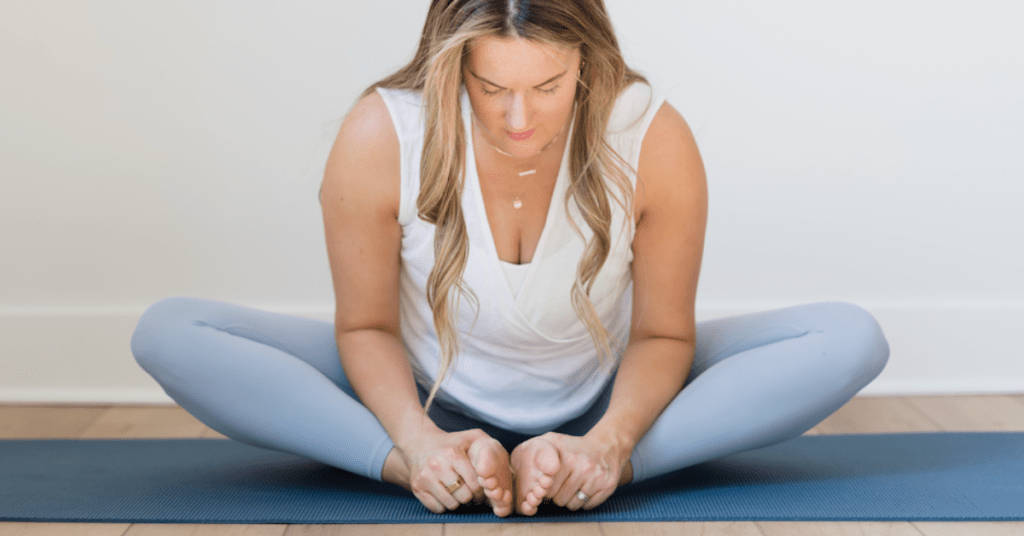
Kate Lombardo of YogaRenew in butterfly pose
Butterfly pose
Butterfly pose (Baddha Konasana) is another yin yoga pose classic. A lot of times, postures in yin yoga have a simpler name than their Sanskrit relatives in vinyasa/ashtanga yoga. What’s known as “butterfly pose” in yin yoga is simply Baddha Konasana, or bound angle pose in vinyasa yoga.
How to: Start in a seated position with your legs straight out in front of you. Grab your inner knees and pull open your legs out to the side, letting the soles of your feet come together (resembling a butterfly).
Butterfly pose helps stretch the lower back, create space in the inner legs, and stretches the muscles in the back of the neck. This pose also offers space for pregnant practitioners’ bellies and might feel good in the pelvic area.
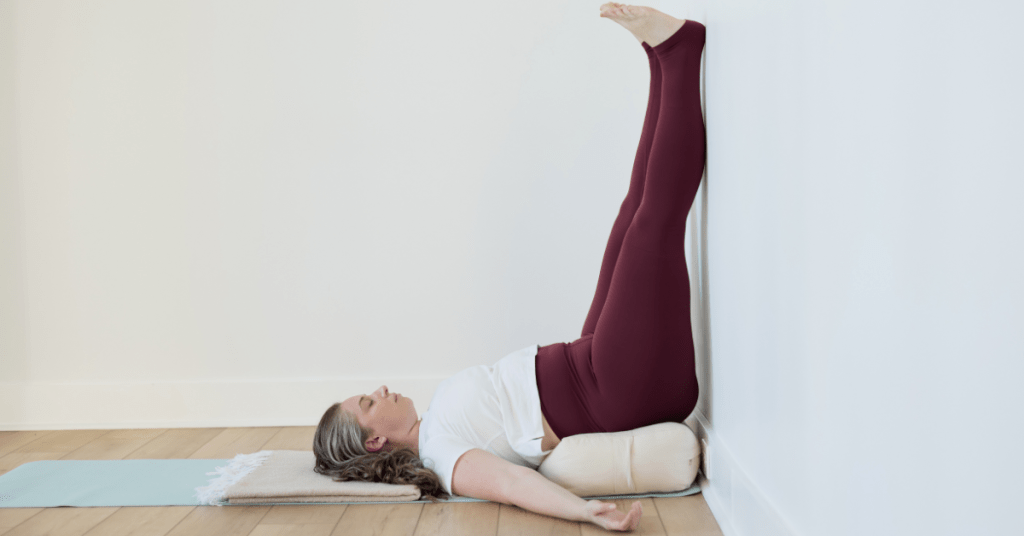
Alex Plante of YogaRenew in legs up the wall with a bolster underneath her sacrum
Legs Up The Wall
Legs up the wall, or Viparita Karani in Sanskrit, is a great way to end a yin yoga class. Legs up the wall is a popular pose for healthy lymphatic drainage in the body and a great way to find stillness and calm the mind.
How to: Start sitting with one of your hips against the wall. Swing your legs up the wall (like a clockhand) and straighten them up the wall any amount that feels comfortable. From there, you can add a blanket or blocks on top of the soles of your feet to help anchor yourself more. You can also add blocks, blankets, or sandbags to the palms of your hands as you have them outstretched on either side of you (in a T shape).
“Yin Yoga Near Me”
Yin yoga has become increasingly popular for its accessible nature, prolonged holding of the postures, and deep release it offers students. It is a challenging practice without looking or feeling challenging and can be adapted to fit your unique body. It can also be done as slowly as you’d like, with as many or as little poses as you wish.
Yin yoga classes continue to grow in popularity as they are oftentimes paired with sound meditation, another meditative practice or are simply held on their own in a longer class time window (think a 75 minute class rather than a 60 minute one). It is also a practice that forces you to look inward and challenge yourself in a healthy way. Just like other forms of yoga, there is no competition and no comparison; there are only the benefits you yourself seek to engage in.
If you’re interested in seeing exactly what a yin yoga class is like, you can visit our headquarters at YogaRenew Hoboken and sign up for a class! We also offer a comprehensive Yin Yoga Teacher Training, led by Kate Lombardo that prepares you for all the steps necessary to deepen your practice or lead your own yin yoga classes.
We love to connect with you! Stay up to date by signing up for our weekly newsletter.


